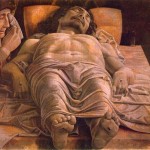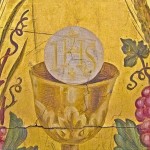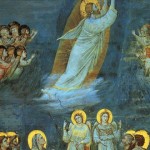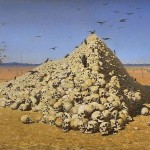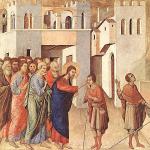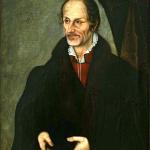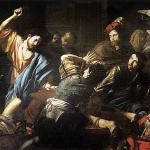
The slogan “Beauty will save the world” is increasingly invoked by religious believers these days. What this might actually mean is not given much thought, as is the case with most reflex responses. The words come from Fyodor Dostoevsky’s The Idiot. The Christians who use the phrase usually think the words issued from the lips of the story’s main protagonist, Prince Myshkin. Nothing could be further from the truth. Dostoevsky’s intended ambivalence toward the phrase is signaled by the fact that Ippolit and Agalya only attribute them to the Prince, but we never hear him using them. The words would be suspect even if they issued directly from the Prince’s lips, because Dostoevsky considered Myshkin to be his biggest authorial failure because the character’s moral beauty and innocence were too weak to save anyone. If anything Myshkin was an example of the “beautiful and lofty” Romantic ideals Dostoevsky fiercely lampooned in Notes From the Underground. And yet isn’t there something beautiful and forcefully prophetic about Alyosha, or even Ivan, in The Brothers Karamazov?
Cecilia González-Andrieu sets out to explore the many ambivalences of the beautiful in her Bridge to Wonder: Art as a Gospel of Beauty. On the margins, the work positions itself in the long line of Catholic Studies monographs inaugurated by David Tracy’s The Analogical Imagination and continued by such works as Greeley’s The Catholic Imagination, Pfordresher’s Jesus and the Emergence of a Catholic Imagination, Murphy’s A Theology of Criticism: Balthasar, Postmodernity, and the Catholic Imagination, Heartney’s Postmodern Heretics, and even Massa’s Anti-Catholicism in America. The accent of all these works falls upon stressing Catholicism’s incarnate and sacramental imagination that, as González-Andrieu says, in its best moments “has historically meant to encounter ‘God in all things,’ as taught by St. Ignatius of Loyola and beautifully lived by St. Francis of Assisi” (110). What the author has in mind are not only extraordinary mystical transports, although those are included as well, but rather Catholicism harnessing “the force of the imagination to lift the community’s gaze toward God in soaring cathedrals and haunting music. But beyond this, in its sacramentality, [Catholicism] has also lifted the ordinary—water, wine, bread, oil—seeing in it another dimension that allows us entry into God’s imagination” (110). In Catholic Studies literature these emphases are frequently contrasted with a more dialectical Protestant imagination that tends to see the relationship between God and his creation in more antagonistic terms; these authors frequently cite Barth’s intersecting lines. The scholarship of Matthew Milliner and William Dyrness has helped to bridge the chasm between these two ideal types by unearthing the analogies between dialectics of the Protestant imagination and the analogies of the Catholic imagination.

Even if the Catholic imagination (at its best) is calibrated to see God in all things González-Andrieu does not ignore the ambivalence of beauty. For example, mystical and ordinary beauty can be used to deaden the senses to real suffering in the world; one can come away from exploring the Vatican Museums or from participating in the most exquisitely staged Latin liturgy with only a great appreciation of their formal perfection, but without having been hearing the call to embody Christ’s mercy. Kitsch, with its own brand of beauty, can sometimes make better contact with God’s beauty than the more expensive artefacts as González-Andrieu’s account of a competition between two Lutheran congregations in one church demonstrates. One congregation was mostly white middle class with an exquisite tree with its expensive, tasteful, but anodyne decorations. The other Lutheran congregation was a mostly migrant-worker congregation that still retained the Catholic tradition of decorating its tree with a posada scene (one that recounts the Holy Family’s return from Egypt and its search for an abode) in such a way as to advert to the scandal of its poverty and migrancy (123–29). Interestingly enough, the phenomenologist Jean-Luc Marion also comes out in favor of kitsch for similar reasons in his Crossing the Visible. He believes kitsch prevents us from idolizing the formal perfection of a sacral artwork, because its bad taste of reminds us that the sacral artwork’s main work lies in pointing us beyond toward God and his image and likeness.
This is an excerpt of a longer review of Bridge to Wonder released today on Syndicate Theology. You can read the rest here.
While you’re at it: you should support the bridge Sam Rocha built between Catholicism and great music in his album Late to Love. Read a glowing review of the album also on Syndicate Theology.
If you are interested in the current state of the intersection between theology and the literary arts here’s Gregory Wolfe‘s Newman Lecture on the topic:

